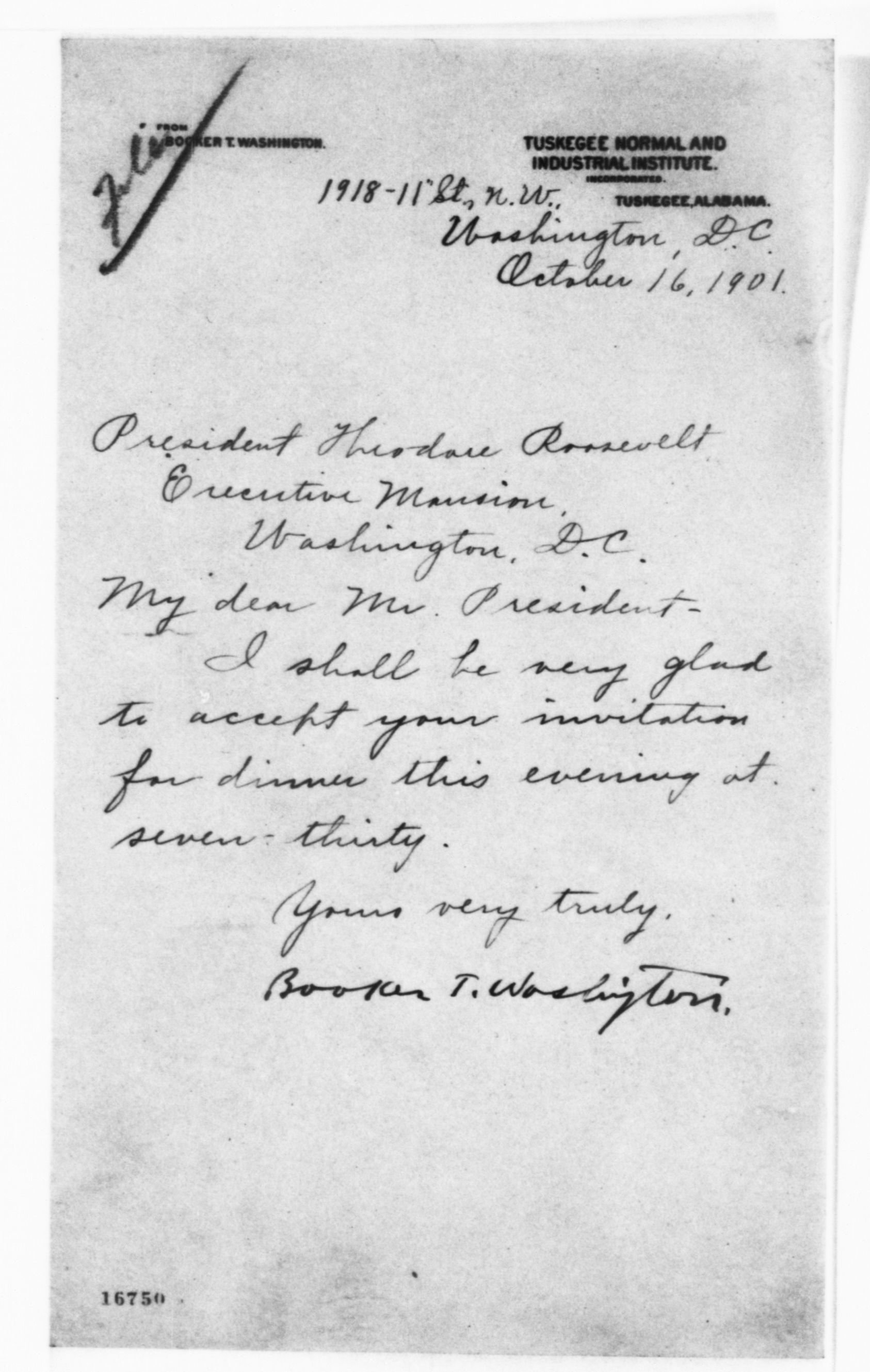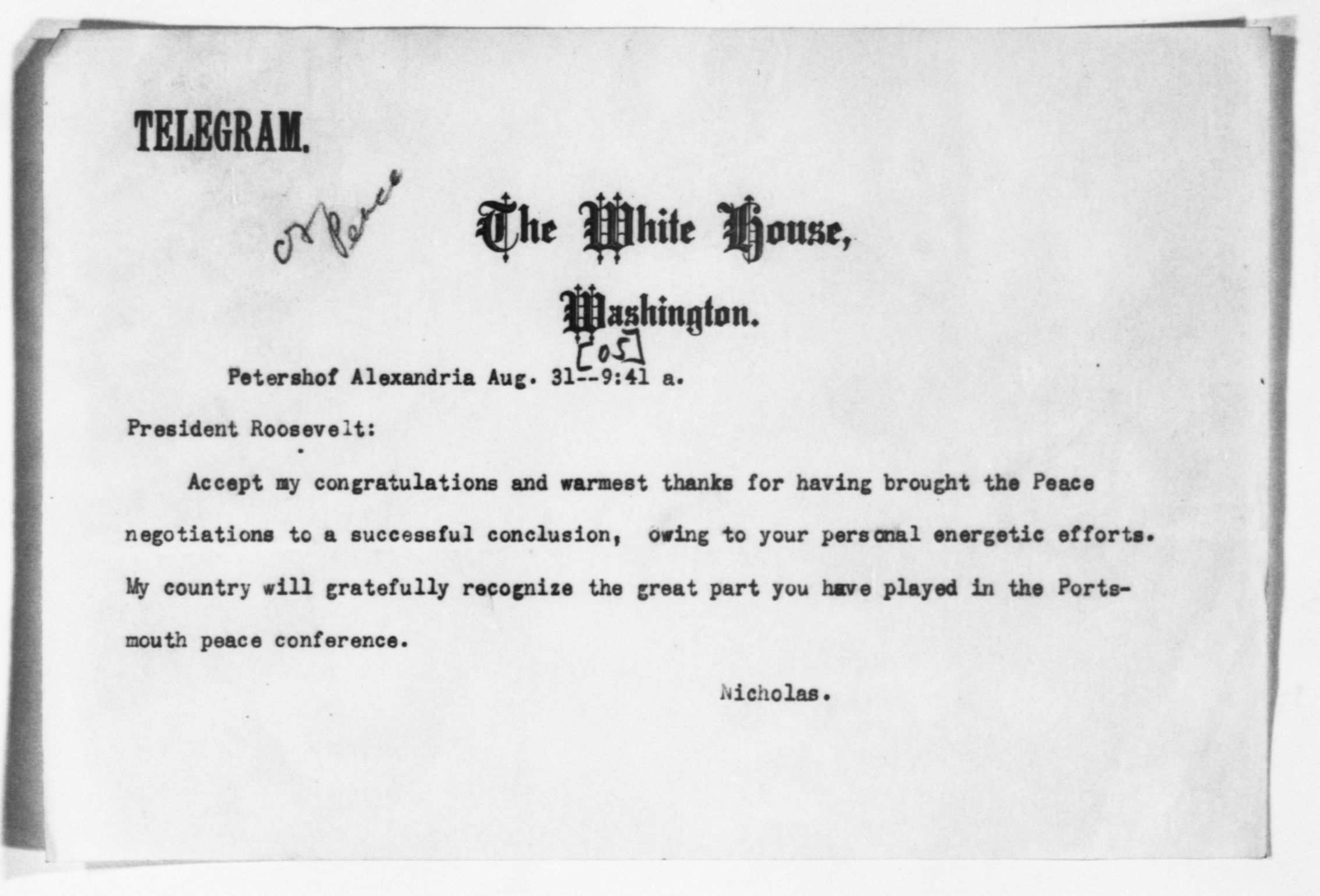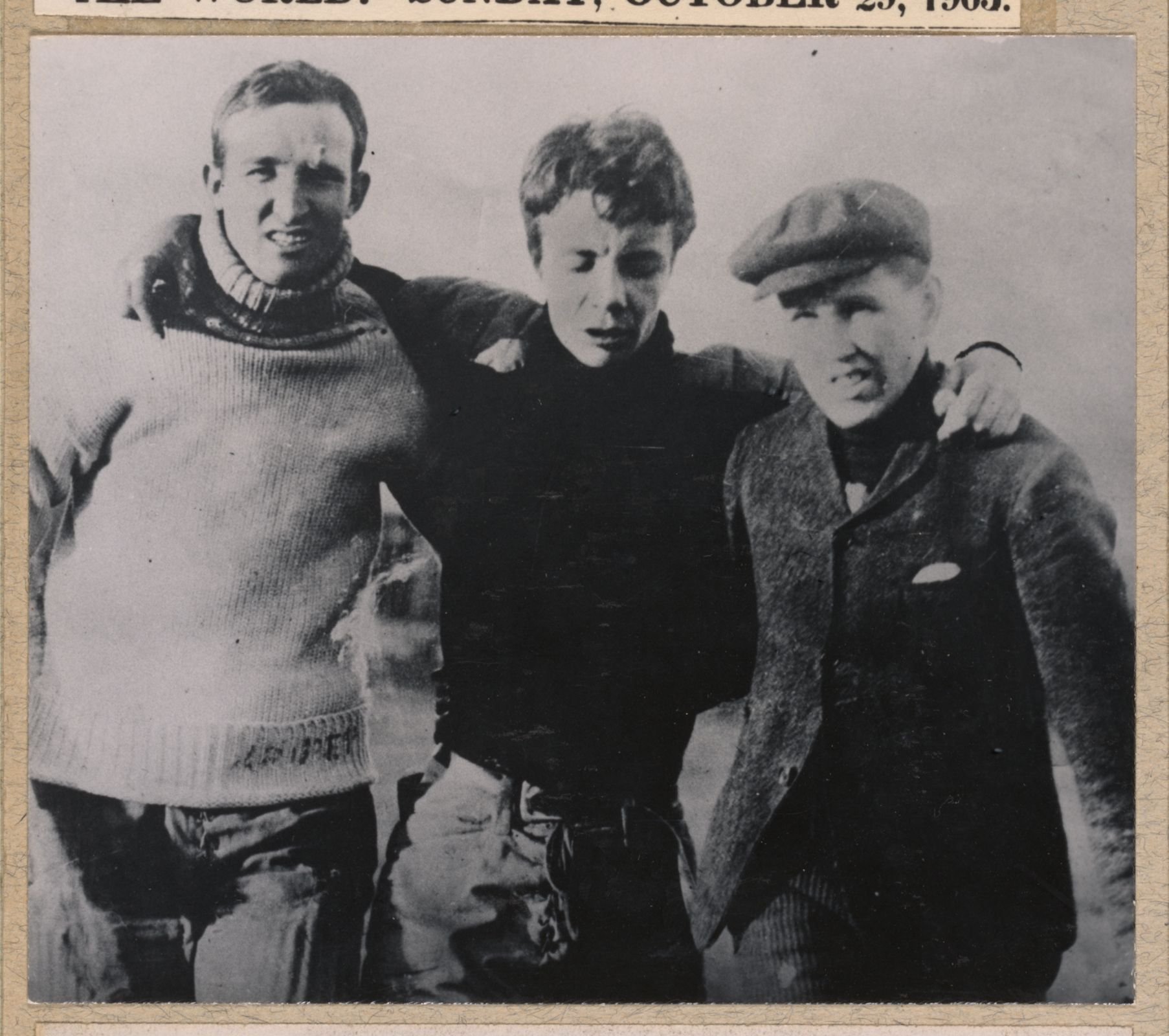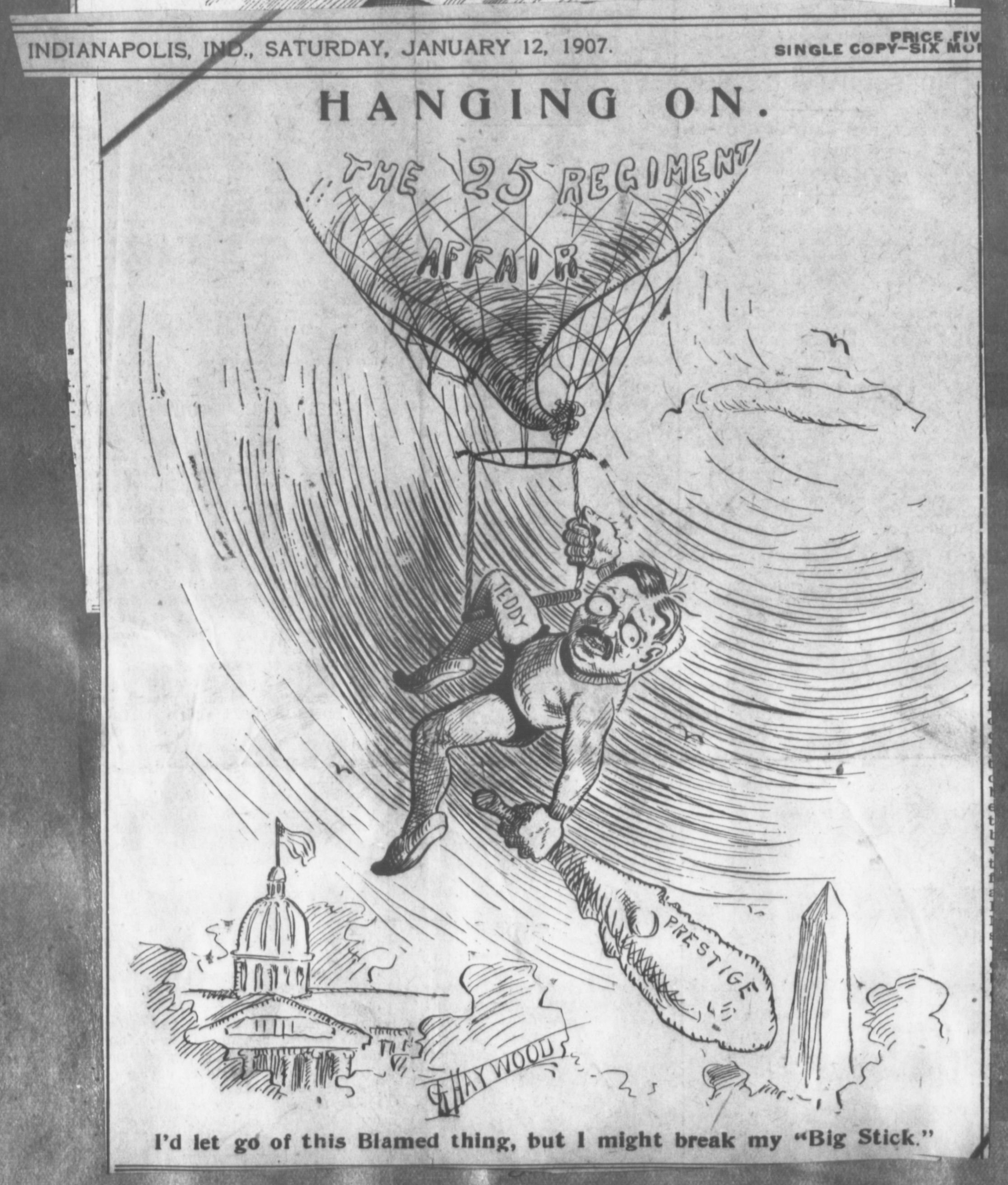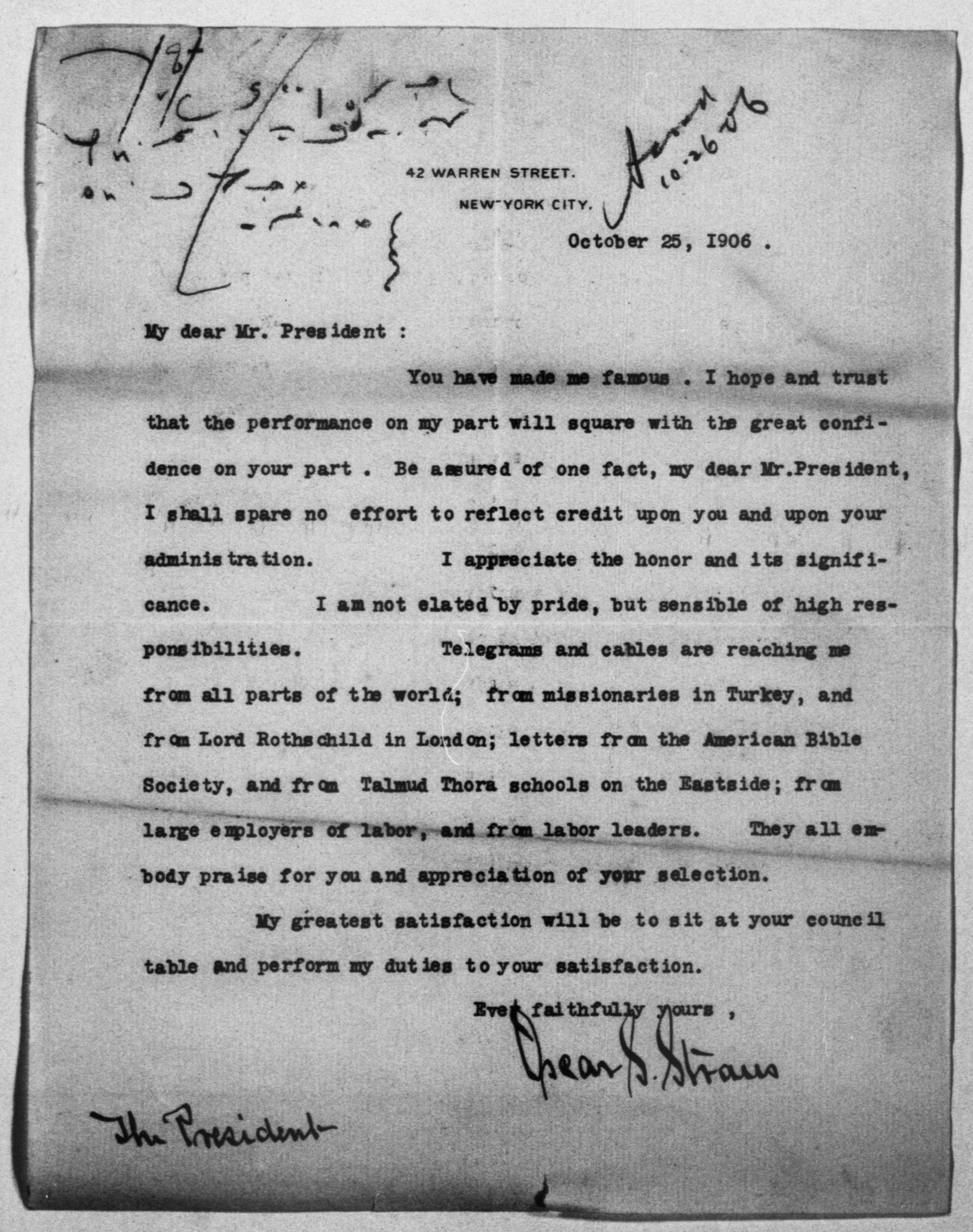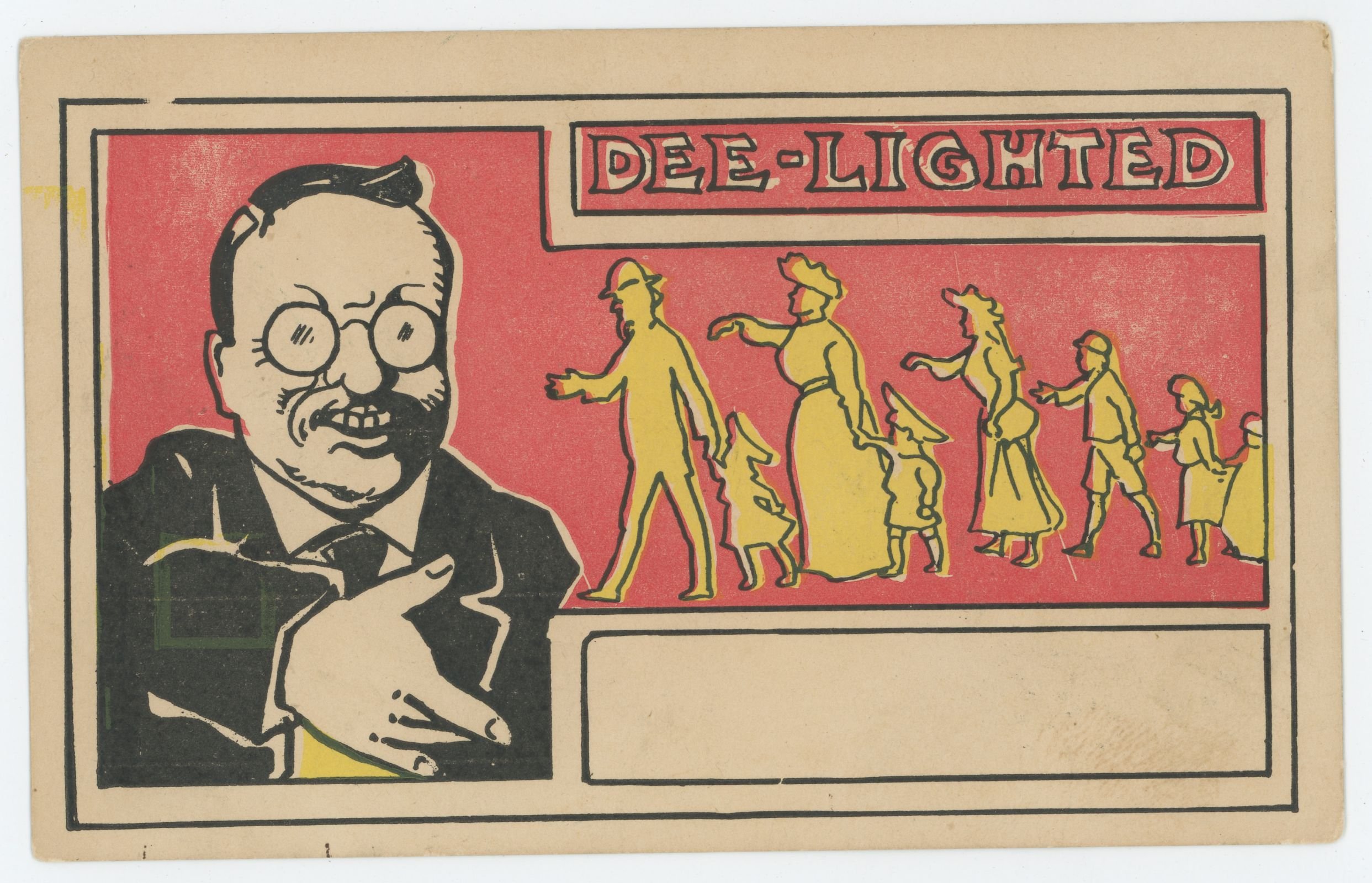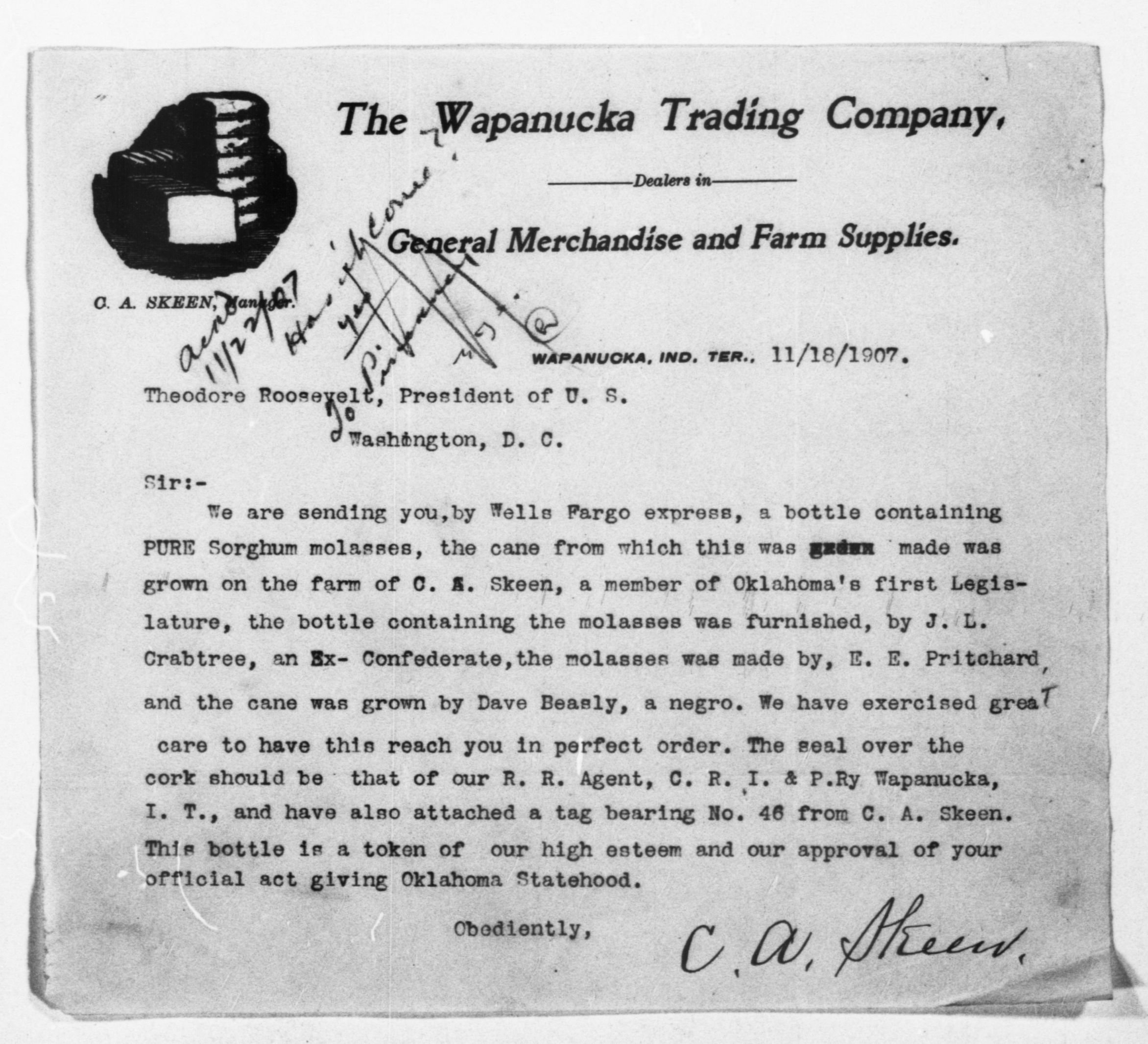Timeline of Theodore Roosevelt’s presidency
“Theodore Roosevelt takes the oath of office
To keep Theodore Roosevelt from running for a second term as governor of New York, the state’s Republicans under the leadership of Thomas C. Platt conspired to get Roosevelt nominated as presidential candidate William McKinley’s running mate. McKinley won the election of 1900; however, he was assassinated on September 6, 1901, and died eight days later. On September 14, 1901, Roosevelt unexpectedly became the 26th president of the United States. At the age of 42, he was the youngest president to assume office.”
“Theodore Roosevelt dines with Booker T. Washington
Theodore Roosevelt became the first president to dine with a Black person at the White House when he invited Professor Booker T. Washington, founder of the Tuskegee Institute, to dinner. Roosevelt approved of Washington’s overall approach to racial matters, and Washington supported Roosevelt’s presidential campaign. Although willing to eat with Washington, Roosevelt held similar racist attitudes as many white Americans at the time and felt that only a select few Black people would make good politicians. Even so, his dinner with Washington became a political statement and bolstered Washington as the leading Black spokesperson in the United States.”
“Theodore Roosevelt signs the Permanent Census Bureau Act
Until 1902, the United States had no permanent census bureau. Rather, temporary organizations collected information about the population instead. However, the temporary census office struggled to keep up with the amount of information needed from the US census. Theodore Roosevelt thus signed an act creating a permanent US Census Bureau, which is still in use today.”
“Theodore Roosevelt signs the extension of the Chinese Exclusion Act
The Chinese Exclusion Act, originally signed in 1882, prohibited Chinese laborers from entering the United States. Theodore Roosevelt extended the act to include Hawaii and the Philippines, territories that were not administered by the United States in 1882. Additionally, the extension required Chinese residents to register and obtain residence certificates or else could face deportation.”
“Theodore Roosevelt helps facilitate an end to the Anthracite Coal Strike
In the anthracite coal fields of Pennsylvania, a labor strike threatened to leave thousands of people without coal as the winter approached. At the time, the United States government had little power to intervene in labor strikes, but Theodore Roosevelt feared “the untold misery . . . with the certainty of riots which might develop into social war.” Roosevelt formed a commission to investigate the strike. Both the mine operators and the union accepted the commission and voted to end the anthracite strike. As an example of Roosevelt’s Square Deal, his negotiations set a precedent for relations between government and labor. On October 23, 1902, the 163-day strike officially ended as the miners returned to work.”
“Theodore Roosevelt signs a bill establishing the Department of Commerce and Labor
In 1903, Theodore Roosevelt created the Department of Commerce and Labor to further industrial development and promote commerce domestically and abroad. George B. Cortelyou, Roosevelt’s personal secretary at the time, became the first secretary of the Department of Commerce and Labor. In 1913, it split into the two departments we know today: the Department of Commerce and the Department of Labor.”
“Theodore Roosevelt establishes Pelican Island as a bird refuge
Theodore Roosevelt believed the federal government should take the lead in conservation. After learning about the uncontrolled killing of birds on Pelican Island in Florida, he established it as the first bird refuge, making it the first of 561 national wildlife refuges. Pelican Island remains protected today and is an essential breeding ground for migratory birds.Roosevelt, friend of the birds
”
“Theodore Roosevelt is elected president in his own right, defeating Alton B. Parker
Theodore Roosevelt ran for his second term in the election of 1904 with running mate Charles W. Fairbanks of Indiana against Democrat Alton B. Parker and running mate Henry G. Davis. After a landslide victory, Roosevelt pledged not to run for reelection, a promise he later regretted.”
“Theodore Roosevelt delivers the Fourth Annual State of the Union message and establishes the Roosevelt Corollary to the Monroe Doctrine
Theodore Roosevelt added a “corollary” to the Monroe Doctrine during his Fourth Annual State of the Union address. In 1823, President James Monroe had warned European powers that the United States would oppose any further colonization in the Western Hemisphere. The Roosevelt Corollary went a step further, stating that, if necessary, the United States would intervene to restore order in Latin America.”
“The US Forest Service is established
The Transfer Act of 1905 officially created the US Forest Service, which gave the government the ability to plan for sustainability of the forest reserves while still providing the growing nation with raw materials needed for expansion. Theodore Roosevelt made Gifford Pinchot the first US Chief Forester. Today’s Forest Service preserves over 190 million acres of land, which is an area about the size of Texas.”
“Theodore Roosevelt is the first president to ride in a submarine
Among other firsts, such as owning an automobile and flying in an airplane, Theodore Roosevelt was the first president to ride in a submarine on August 25, 1905. He rode in the USS Plunger for nearly three hours with the submarine’s commander, Lieutenant Charles Preston Nelson. Roosevelt enjoyed the experience, even briefly taking the controls himself, and stated afterwards, “I believe a good deal can be done with these submarines.””
“Russia and Japan sign the Portsmouth Treaty facilitated by Theodore Roosevelt
In 1905, Theodore Roosevelt helped end the Russo-Japanese War with the signing of the Portsmouth Treaty in New Hampshire. The war was fought over Japanese and Russian spheres of influence in Korea and Manchuria and over control of Port Arthur. At the end of the war, Russian envoys refused any compromise on the treaty. Roosevelt went over their heads to the Czar of Russia and Emperor of Japan to seek a conclusion to the negotiations. ”
“Theodore Roosevelt introduces safety reforms to football, saving the future of the sport
When Theodore Roosevelt’s son, Ted, was injured in a college football scrimmage, he realized how close some colleges were to ending the sport due to safety concerns. Roosevelt met with the heads of Princeton, Yale, and Harvard and insisted that they reduce the brutality of football. It is believed that these safety reforms may have saved the future of football. The NCAA even named their highest honor after Roosevelt: the “Teddy.””
“Theodore Roosevelt signs the Antiquities Act
In 1906, Theodore Roosevelt signed the Act for the Preservation of American Antiquities. Commonly known as the Antiquities Act, this act was a broad law that allowed the government to protect cultural and natural resources. A few months later, Roosevelt used this power to declare Devils Tower in northeastern Wyoming the first national monument. During his presidency, Roosevelt designated 18 national monuments of the 103 that exist today.”
“Theodore Roosevelt signs the act enabling Oklahoma, New Mexico, and Arizona to join the Union
In 1906, Theodore Roosevelt signed the Enabling Act, which allowed Oklahoma, New Mexico, and Arizona to join the United States. Oklahoma Territory was granted statehood in 1907, while New Mexico and Arizona joined in 1912.”
“Theodore Roosevelt signs the Pure Food and Drug Act, known as Dr. Wiley’s Law
The Pure Food and Drug Act that Theodore Roosevelt signed into law was an attempt to protect the health of American consumers. Also known as Dr. Wiley’s Law, this act required accurate ingredient labeling and prohibited the sale of adulterated—or poor quality—food.”
“Theodore Roosevelt dishonorably discharges an entire regiment of 167 Black men
In August 1906, a race-related incident in Brownsville, Texas resulted in the death of one white civilian and the wounding of another. The townspeople of Brownsville blamed the Black soldiers of the 25th Infantry who were stationed at nearby Fort Brown. In November 1906, Theodore Roosevelt discharged the entire regiment of 167 men without honor despite their assertion of innocence. The white officers were exempted. After a reinvestigation in 1972, the U.S. Army confirmed that the 25th Infantry was innocent, and the regiment was given an honorable discharge, mostly posthumously as only two men were still alive.”
“Theodore Roosevelt is the first president to travel outside the United States during his presidency, visiting the Panama Canal Zone
A great achievement of Theodore Roosevelt’s presidency was facilitating the building of the Panama Canal, a 50-mile-long canal that connected the Atlantic Ocean and the Pacific Ocean. Roosevelt became the first president to travel outside the United States during his presidency when he visited the Panama Canal Zone to view the construction’s progress.”
“Theodore Roosevelt is awarded the Nobel Peace Prize for his efforts to end the Russo-Japanese War
After Theodore Roosevelt promoted the signing of the Portsmouth Treaty between Russia and Japan, the Russo-Japanese War ended in September 1905. Roosevelt was awarded the Nobel Peace Prize for his successful negotiations. He was not able to accept the prize in person. Instead, American minister to Norway Herbert H. D. Peirce accepted the prize and gave a speech Roosevelt wrote on the president’s behalf.”
“Theodore Roosevelt names the first Jewish member of the cabinet
Oscar Straus, who had been serving as an American ambassador to the Ottoman Empire, made history when Theodore Roosevelt appointed him as the first Jewish US cabinet member. He served as Secretary of Commerce and Labor until the end of the Roosevelt administration.”
“Theodore Roosevelt shakes 8,513 hands, setting a Guinness world record
At a White House reception, Theodore Roosevelt set a Guinness world record when he shook hands with 8,513 people. Roosevelt’s reputation for shaking hands and telling people he was “dee-lighted” even made it onto postcards such as the one pictured.”
“The Panic of 1907 begins, impacting the United States for three weeks
The Panic of 1907 was a series of bank runs in New York City as well as in other American cities during Theodore Roosevelt’s presidency. It took place during an economic recession and was due to public distrust of banks. While this panic created a three-week-long crisis throughout the nation, it also led to reforms that eventually became the Federal Reserve System.”
“Oklahoma becomes a state
Both Oklahoma Territory and Indian Territory entered the United States as the single state of Oklahoma, the 46th state. This occurred a year-and-a-half after Theodore Roosevelt signed the Enabling Act, which allowed Oklahoma to enter the Union.”
“Theodore Roosevelt sends the Great White Fleet around the world
Theodore Roosevelt displayed America’s power to the world when he sent the Great White Fleet, a force of 16 battleships, to sail around the world. The fleet’s journey lasted 14 months and consisted of 14,000 sailors. The Great White Fleet represented the culmination of Roosevelt’s efforts to establish the United States as a supreme naval power.”
“Theodore Roosevelt declares the Grand Canyon a national monument
Theodore Roosevelt used the Antiquities Act to declare the Grand Canyon a National Monument and set aside over 800,000 acres of land in Arizona. In an earlier visit to the Grand Canyon, Roosevelt had said, “Let this great wonder of nature remain as it now is. You cannot improve on it. But what you can do is keep it for your children, your children’s children, and all who come after you, as the one great sight which every American should see.” In 1919, after the creation of the National Park Service, Grand Canyon National Park was established.”
“Theodore Roosevelt hosts the first National Governors Conference to discuss natural resources
At the first National Governors Conference in 1908, Theodore Roosevelt met with state leaders from across the country to discuss how to conserve national resources. Roosevelt opened the conference with a speech called “Conservation as a National Duty.” His speech played a part in turning the issue of conservation into a public concern about the country’s future, linking conservation to themes of patriotism and morality.”
“Theodore Roosevelt signs Appropriation Act, which increases the president’s salary
Theodore Roosevelt signed the Appropriation Act, which increased the president’s salary from $50,000 to $75,000. During the 120 years since George Washington’s presidency, the president’s salary had only increased once before. Beginning in 1908, Congress debated increasing the salary again effective with the beginning of Taft’s presidency. The act passed both the House of Representatives and the Senate and was signed by Roosevelt on March 3, 1909—the day before he left office.”


